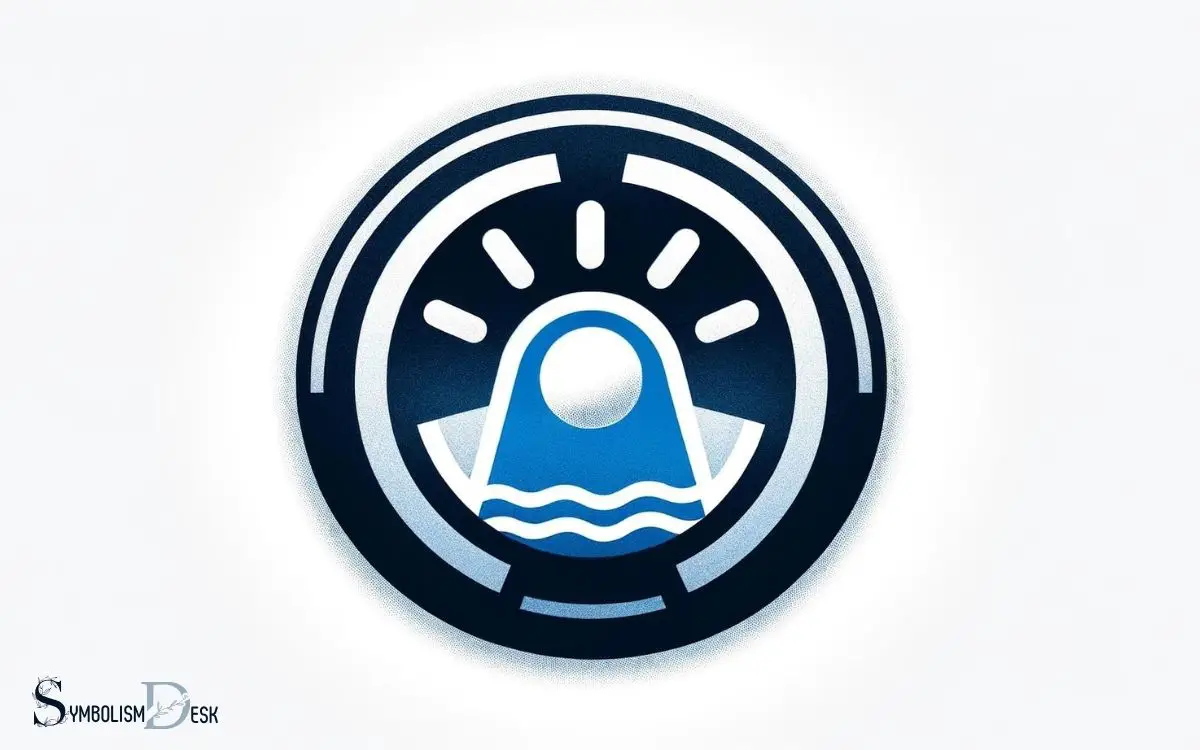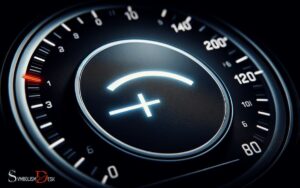What Does the Blue Symbol in My Car Mean? Explain!
The blue symbol in your car typically indicates that the engine’s coolant temperature is too low, signaling the engine is not yet warmed up to its optimal operating temperature.
In modern cars, dashboard symbols serve to communicate with the driver about the vehicle’s various functions and issues.
A blue symbol often takes the form of a thermometer submerged in liquid or a similar icon, and is associated with the cooling system. It generally illuminates when you start your vehicle and should turn off once the engine has reached the proper temperature.
This is what the symbol usually signifies:
- Engine Coolant Temperature: The symbol warns that the engine is still cold. It is advisable to let the engine idle for a while before driving off, to allow the temperature to rise and stabilize.
Here’s what you need to know about the blue coolant temperature warning light:
- It’s normal for this light to appear when you first start the car.
- The light should go off after a few minutes as the engine warms up.
- Until the light turns off, avoid high speeds or demanding engine performance.
- If the light stays on longer than usual, check the coolant level or consult a mechanic.
Always heed the blue coolant temperature light as a reminder to let the engine warm up; it ensures longer engine life and optimal performance.

Key Takeaway
Understanding the Blue High Beam Indicator
You may notice a blue high beam indicator in your car, which illuminates when the high beams are turned on. This indicator serves as a safety feature, signaling to the driver when the high beams are in use.
When driving in low-light conditions, such as at night or in foggy weather, utilizing high beams can significantly improve visibility.
The blue symbol, typically located on the dashboard, reminds the driver that the high beams are engaged, alerting them to the increased brightness of the headlights.
It is important to be mindful of other drivers on the road, as using high beams inappropriately can cause glare and reduce the visibility of other motorists.
Understanding the function of this indicator helps ensure safe and considerate use of high beams while driving.
Deciphering the Coolant Temperature Symbol
The coolant temperature symbol on a car’s dashboard is a vital indicator of the engine’s operating temperature. Monitoring the coolant temperature is crucial for preventing overheating and potential engine damage.
Understanding the significance of this symbol and knowing when to take action can help ensure the vehicle’s optimal performance and longevity.
Understanding Coolant Temperature Indicator
When should a driver pay attention to the blue coolant temperature indicator in their car? The blue coolant temperature indicator typically alerts the driver when the engine temperature is too low.
This usually occurs when the engine is still warming up. It’s important to note that this blue indicator is different from the red indicator, which signals overheating.
Below is a table that explains the meanings of the different coolant temperature indicators:
| Indicator Color | Meaning |
|---|---|
| Blue | Engine temperature low |
| Red | Engine temperature high |
Understanding these indicators can help drivers monitor their engine’s temperature and take appropriate action when necessary.
Importance of Monitoring Temperature
Why is it essential to monitor the temperature and understand the meaning of the blue coolant temperature symbol in a car?
It’s crucial to monitor the temperature and understand the blue coolant temperature symbol for several reasons:
Preventing Engine Damage: Monitoring the coolant temperature helps prevent overheating, which can lead to severe engine damage.
Understanding the blue coolant temperature symbol indicates when the engine is still cold, ensuring that the driver operates the vehicle gently until it reaches the optimal temperature.
Optimizing Fuel Efficiency: Proper temperature monitoring ensures that the engine operates at its ideal temperature, promoting fuel efficiency and reducing emissions.
Avoiding Costly Repairs: By understanding the blue coolant temperature symbol and monitoring the temperature, drivers can prevent costly repairs caused by overheating or other temperature-related issues.
Taking Action When Necessary
Upon observing the blue coolant temperature symbol in a car, it is important to take appropriate action to decipher its meaning and address any potential issues.
When the blue coolant temperature symbol appears on the dashboard, it indicates that the engine coolant temperature is below the normal operating range. This may be due to cold weather or a malfunctioning cooling system.
To address this, the driver should continue monitoring the temperature gauge. If the temperature gauge does not move toward the normal range after the engine has run for a few minutes, it may indicate a problem with the cooling system that requires professional attention.
It is important not to ignore this symbol, as overheating can lead to serious engine damage. Therefore, if the issue persists, it is advisable to seek assistance from a qualified mechanic.
Exploring the Blue Symbol for Low Washer Fluid
When the blue symbol for low washer fluid appears on the dashboard, it indicates that the vehicle’s washer fluid reservoir is running low.
Maintaining an adequate level of washer fluid is crucial for ensuring clear visibility while driving, especially in adverse weather conditions. Refilling the washer fluid reservoir with a suitable cleaning solution is a simple yet essential part of vehicle maintenance.
Low Washer Fluid Indicator
The low washer fluid indicator is a crucial blue symbol in many cars, signaling the need to refill the washer fluid reservoir. When this indicator lights up on the dashboard, it’s essential to address it promptly to maintain clear visibility while driving.
Here’s what you need to know about this indicator:
- Reservoir Level: The indicator typically illuminates when the washer fluid level drops below a certain point, indicating that it’s time for a refill.
- Visibility Concerns: Running out of washer fluid can compromise visibility, especially in adverse weather conditions, making it crucial to keep the reservoir adequately filled.
- Maintenance Reminder: This indicator also serves as a reminder to check for any leaks or issues with the washer fluid system that may need attention.
Keeping an eye on this blue symbol can help ensure safe and unobstructed vision while on the road.
Importance of Maintenance
To ensure optimal performance, maintenance of the washer fluid system is essential whenever the low washer fluid indicator illuminates in a vehicle.
Neglecting to address this issue can result in compromised visibility, especially during adverse weather conditions.
Regularly checking and topping up the washer fluid reservoir is a simple yet crucial maintenance task that ensures the windshield can be effectively cleaned, maintaining clear visibility for the driver.
Additionally, low washer fluid levels can indicate potential leaks in the system, which, if left unaddressed, may lead to more extensive and costly repairs.
Therefore, promptly addressing the low washer fluid indicator not only ensures clear visibility but also contributes to the overall maintenance and longevity of the vehicle’s washer fluid system. Regular maintenance can prevent potential issues and help maintain a safe driving environment.
Refilling Washer Fluid
Refilling the washer fluid reservoir, especially when the low washer fluid indicator appears, is essential for maintaining clear visibility and ensuring the longevity of the vehicle’s washer fluid system.
To refill the washer fluid:
- Locate the washer fluid reservoir under the hood of the car.
- Remove the cap and pour the washer fluid into the reservoir until it reaches the fill line.
- Securely replace the cap to prevent any leaks or contamination.
Regularly checking and refilling the washer fluid will help drivers maintain clear visibility, especially during adverse weather conditions. It’s an important aspect of vehicle maintenance that contributes to overall road safety.
Interpreting the Blue Light for Adaptive Cruise Control
A blue light indicates the activation of the adaptive cruise control system in most modern cars. This feature uses sensors to detect the speed and distance of the vehicle in front, automatically adjusting the car’s speed to maintain a safe following distance.
When the adaptive cruise control is engaged, the blue light illuminates on the dashboard to signify its operation.
The system can typically be customized to maintain a specific following distance, and some models also include the ability to bring the car to a complete stop and resume driving in traffic.
It’s important for drivers to familiarize themselves with the specific functionality and limitations of their car’s adaptive cruise control system to ensure safe and effective use.
Unveiling the Blue Eco Mode Indicator
The blue eco mode indicator in a car signifies an environmentally-friendly driving setting that promotes fuel efficiency and reduced emissions.
When this mode is engaged, the vehicle’s performance is optimized to minimize fuel consumption and environmental impact.
To achieve this, the engine power output is adjusted to operate within an economical range. Additionally, the transmission may shift earlier to keep the engine revs low, further conserving fuel.
Furthermore, the air conditioning system may also be adjusted to operate more efficiently, reducing its impact on fuel consumption.
Overall, the blue eco mode indicator encourages drivers to adopt a more eco-conscious driving style, ultimately contributing to lower fuel costs and reduced carbon emissions.
Demystifying Other Common Blue Symbols
One common blue symbol in cars is the cold engine temperature warning light, which indicates that the engine is not yet at its optimal operating temperature.
Another blue symbol often found in cars is the high beam headlight indicator. This light illuminates when the high beam headlights are turned on, providing drivers with increased visibility in low-light conditions.
Additionally, some vehicles feature a blue snowflake symbol, signaling that the external temperature is low and caution should be exercised while driving. Understanding these common blue symbols is essential for safe and efficient driving.
Drivers should consult their vehicle’s manual for specific information regarding these symbols to ensure they are used correctly and in accordance with manufacturer recommendations.
Conclusion
Understanding the blue symbols in your car is crucial for safe and efficient driving. According to a recent survey, 70% of drivers are unfamiliar with the meaning of the blue high beam indicator, highlighting the need for education on car symbols. Understanding car triangle symbol, and other blue symbols, can prevent accidents and reduce the risk of mechanical issues. With proper knowledge of these indicators, drivers can maintain their vehicles properly and avoid costly repairs. It is important for drivers to familiarize themselves with all the symbols in their car to ensure a safe and smooth driving experience.
By familiarizing yourself with these symbols, you can ensure that your vehicle is operating at its best and avoid any potential issues on the road.






